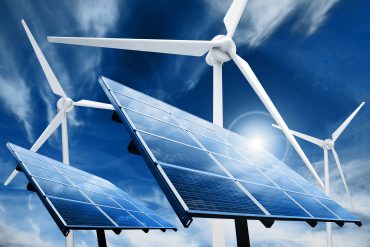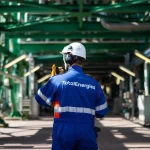
- Green Tech
China Drives 74% of Global Solar and Wind Projects
6 minute read

Renewable energy construction booms as China builds 510 GW of wind and solar projects across its industrial regions
Key Takeaways
- China dominates global renewable construction with 74% share: The country accounts for 510 GW of the world’s 689 GW utility-scale solar and wind capacity under development, representing a 57% increase from last year.
- $625 billion clean energy investment nearly doubles capacity: China achieved its 2030 wind and solar targets six years early, with combined renewables reaching 1,482 GW in Q1 2025, surpassing coal capacity for the first time.
- Offshore wind surge positions China for coastal decarbonization: The nation added 4.4 GW of offshore wind in 2024, more than half of global additions, with 67 GW in development pipeline targeting heavy industrial regions.
Introduction
China has cemented its position as the world’s renewable energy superpower, constructing three-quarters of all wind and solar projects globally while installing capacity at 1.5 times the pace of last year. The country now controls 510 GW of utility-scale solar and wind power under construction, according to Global Energy Monitor, representing 74% of the global total of 689 GW.
This unprecedented expansion reflects China’s accelerated push toward energy independence and carbon neutrality by 2060. The scale of development dwarfs international competitors, with China’s new renewable capacity alone capable of generating more electricity than Japan consumed in all of 2023.
Key Developments
China’s renewable energy trajectory has accelerated dramatically since announcing its dual carbon goals five years ago. The country achieved its 2030 wind and solar capacity target in 2024, six years ahead of schedule, signaling an aggressive approach to clean energy transition.
Clean energy investment reached $625 billion in 2024, nearly doubling since 2015. This surge enabled China to install a record 104.9 GW of solar capacity in just the first four months of 2025, bringing total installed photovoltaic capacity to 1,241 GW.
The offshore wind sector has emerged as a strategic focus, with China adding 4.4 GW of offshore capacity in 2024. This represents more than half of all global offshore wind additions, with 28 GW currently under construction and 67 GW in the development pipeline.
Grid infrastructure has received parallel investment, with China allocating $84.7 billion to transmission expansion and modernization in 2024. This 15% year-on-year increase addresses the critical need for integrating massive new renewable capacity.
Market Impact
China’s renewable expansion has fundamentally shifted global energy markets and supply chains. Combined wind and solar capacity reached 1,482 GW in Q1 2025, surpassing coal-fired capacity for the first time in the nation’s history.
The rapid deployment has created export market volatility, with photovoltaic product exports falling 30.5% year-on-year in Q1 2025 due to global market saturation. However, solar cell exports rose significantly, indicating China’s pivot toward higher-value manufacturing segments.
Clean energy now accounts for 39% of China’s electricity generation, with new zero-emissions capacity increasingly meeting additional demand. This shift suggests coal generation may plateau sooner than anticipated, potentially accelerating peak emissions targets.
Strategic Insights
China’s renewable dominance extends beyond domestic capacity to global supply chain control. The country’s wind capacity under construction alone could power approximately 120 million US households, according to Global Energy Monitor.
Coastal provinces present the greatest decarbonization opportunity, with offshore wind particularly suited for heavy industries concentrated along the Bohai Rim, Yangtze River Delta, and Pearl River Delta. Guangdong province’s 11.4 GW offshore wind fleet could avoid 23 million tonnes of CO₂ annually when fully operational.
The government has shifted strategy by reducing subsidies for solar and onshore wind, indicating these sectors have matured sufficiently to compete without extensive financial support. Simultaneously, private sector participation has expanded beyond manufacturing into strategic areas including nuclear power and energy storage.
Despite renewable growth, China constructed 94.5 GW of coal power projects in 2024, representing 93% of the global total. Analysts suggest much of this capacity serves as backup to renewable sources rather than primary generation.
Expert Opinions and Data
Mengqi Zhang, a researcher at Global Energy Monitor, emphasized the scale of China’s achievement: “China has long been head and shoulders above the rest in building wind and solar, so it’s not surprising to see the uptick in offshore capacity. What is really impressive is just how much potential there is to displace emissions from fossil fuels and drive a clean energy transition along the coast’s industrial heartland.”
President Xi Jinping reinforced China’s commitment this year, pledging that climate change efforts “will not slow down” despite changing international circumstances. The government has targeted a 65% reduction in carbon intensity by 2030 from 2005 levels.
Industry projections indicate China could add 246.5 GW of solar capacity and 97.7 GW of wind capacity in 2025. The Financial Times reported that Global Energy Monitor’s analysis shows China’s continued acceleration in renewable deployment.
The government facilitated private sector participation in more than 8,000 recommended energy projects in 2024, marking a significant shift from traditional state-owned enterprise dominance. This policy evolution extends private involvement into previously restricted areas including upstream oil and gas operations.
Conclusion
China’s renewable energy expansion represents the largest clean energy deployment in global history, fundamentally reshaping domestic energy markets and international supply chains. The country’s achievement of 2030 targets six years early demonstrates the effectiveness of coordinated policy, massive capital deployment, and industrial scale.
The transition creates both opportunities and challenges, with offshore wind positioning China to decarbonize its industrial heartland while export market saturation forces strategic pivots toward higher-value segments. China’s renewable leadership now extends beyond capacity installation to encompass grid modernization, private sector integration, and supply chain dominance across the global clean energy ecosystem.








